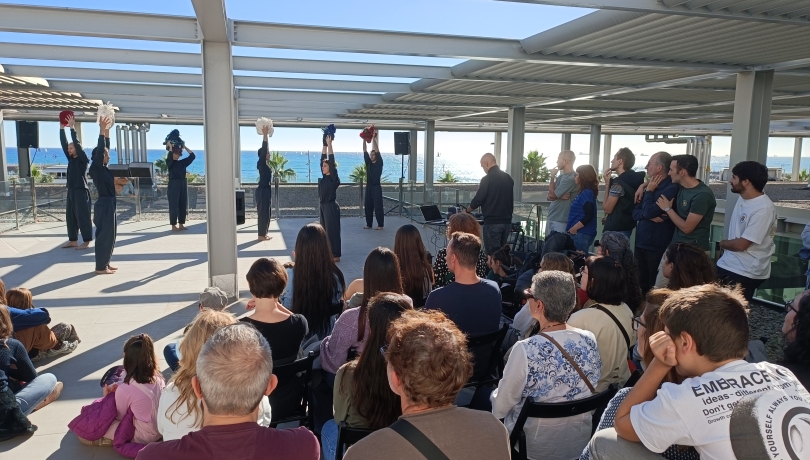Four days of activities brought together over 400 visitors, including schools and the general public, expanding the ways of communicating science.

Last week, the Institute of Marine Sciences (ICM-CSIC) held a new edition of its open days, four consecutive days of activities combining scientific outreach, citizen participation, and an innovative artistic proposal. In total, more than 400 people — including secondary and high school students, teachers, and the general public — visited the institute, reaffirming its commitment to opening marine research to society at large.
From Wednesday to Friday, the ICM welcomed nearly 240 students from about ten educational centers in Barcelona and other Catalan municipalities. Participating schools included public and semi-private schools, as well as high-complexity institutes and “blue schools,” reinforcing the center’s commitment to diverse and inclusive outreach. Although the ICM organized the event, scheduled activities also involved the Institute of Evolutionary Biology (IBE) and the Marine Technology Unit (UTM), giving groups a broader perspective on research and the work of scientific and technical staff.
The educational activities offered an immersion in different areas of oceanography and marine biology: from observing organisms and real samples to interpreting environmental data collected from oceanographic vessels and remote regions such as Antarctica. Students could also visit unique areas of the Institute, including aquariums, specialized laboratories, and marine research support facilities. The participation of ICM researchers and technical staff, as well as collaborating centers, provided a hands-on experience of how scientific knowledge is generated and analyzed.
This format has consolidated the open days educational program as an opportunity for schools to gain privileged access to research, fostering students’ scientific interest and building bridges between the academic and educational worlds. This year, the ICM also strengthened its commitment to making these events more accessible and representative, incorporating inclusivity criteria in both the participation of schools and the design of activities.
On Saturday, the Institute opened its doors again, this time to the general public, transforming its corridors and laboratories into a freely navigable space. Visitors could explore ICM’s reference biological collections, marine seismic studies, instruments used to study water masses, the Electron Microscopy Service, the impact of fishing, and research carried out in aquariums and experimental chambers. The main goal was to showcase the research lines conducted at the institute and provide a direct point of contact with the scientific community.
One of the main novelties of this edition was the integration of art as a complementary language to bring science closer to the public. As part of the Barcelona Sea of Science program, the event featured the premiere of ABISME, a dance piece by the Miquel Barcelona Company inspired by research lines at the Institute. Designed to explore the intersection between contemporary dance and marine sciences, ABISME examined how ocean dynamics can inspire new forms of movement and how dance tools can help communicate scientific knowledge. After the performance, with live music by Oriol Mula Forner and costumes by Paola Idrontino, a space for interdisciplinary dialogue was created, enriching the understanding of the marine environment from an emotional and sensory perspective.
This year, all Saturday activities were fully inclusive, with Catalan sign language (LSC) interpretation in collaboration with Binomils. This initiative reflects ICM’s commitment to making its open days accessible to everyone and to representing the diversity of the society it aims to reach.